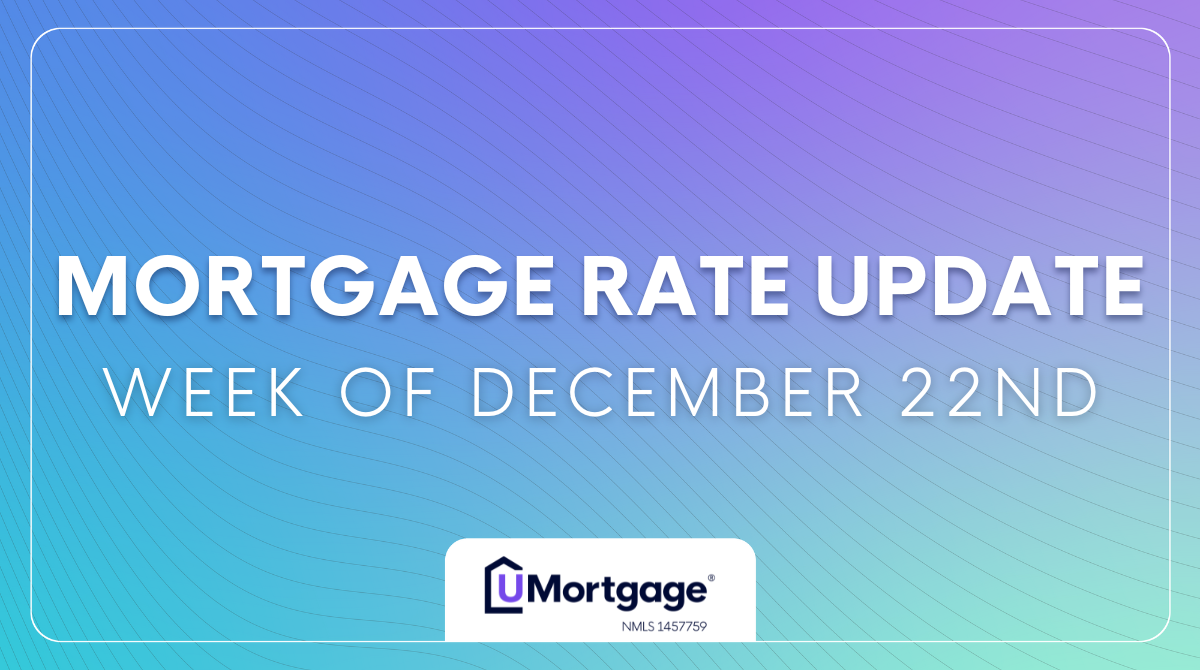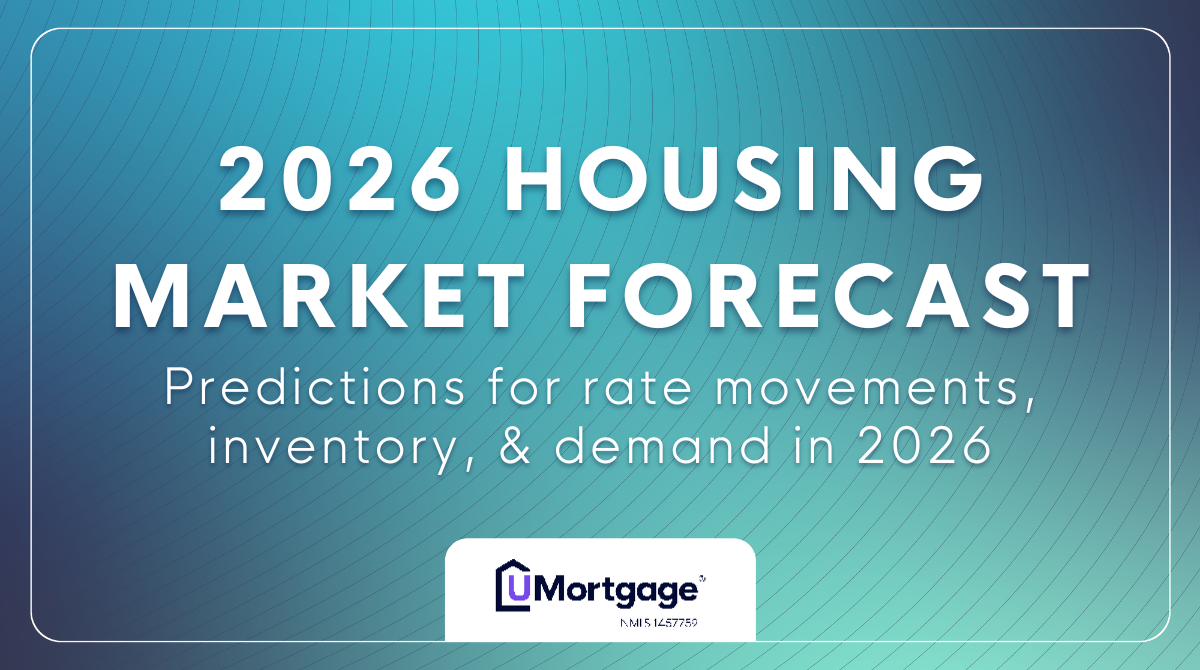December 18, 2025
2026 Mortgage Rate Forecast and Housing Market Predictions
Trying to predict the housing market is like trying to guess the weather. But understanding how mortgage rates react to other markets and, sometimes more importantly, other market sentiment can make it easy to navigate the market and time rate dips to your advantage.
This was especially true for the market in 2025. Rates gradually declined throughout the year, but there were specific windows when informed buyers and homeowners took advantage of rates at or near annual lows.
It’s likely to be true for the 2026 housing market as well, which is shaping up to be normalized and opportunity-driven rather than one that crashes or booms.
Federal Reserve Policy and Mortgage Rates
Why the market moves and why mortgage rates can feel jumpy at times
One of the biggest misconceptions regarding the housing market is that mortgage interest rates only move when the Federal Reserve cuts or hikes the fed funds rate. In reality, mortgage rates move in a slow dance with other markets, especially the 10-year Treasury yield, and those markets react more to expected Fed policy than they do to actual Fed action.
That’s exactly what we saw in 2025. Before the September and October Fed Meetings (which featured our first two federal funds rate cuts of the year), mortgage rates improved in the weeks leading up to those meetings, then became choppy or even moved higher after the decisions were announced.
The two drivers that matter most for Fed policy and the expectations that move rates are inflation and the labor market. Inflation has risen slowly this year, but the Fed believes this is likely due to a one-time price adjustment resulting from President Trump's tariff policies.
On the other side, the labor market has been a primary concern for the Fed. Its slow deterioration this year was cited as the primary reason behind each of 2025's three fed funds rate cuts.
The Bureau of Labor Statistics (BLS) reported that the unemployment rate rose to 4.6% in November, the highest level since September 2021 and 0.6% since the start of the year. Monthly nonfarm payroll reports from the BLS also posted negative month-over-month growth three times in 2025, a first since 2020, with the December jobs numbers still to come and the October & November reports likely to be revised.
In the Fed’s December 2025 press conference, Chair Jerome Powell acknowledged the weakness in the labor market, saying, “the labor market has continued to cool gradually, maybe just a touch more gradually than we thought,” in relation to rising unemployment and negative data from the BLS.
Regarding the job market in 2026, he said there are several downside risks to the economy if these trends continue, which means forecasts today can change with the data we receive tomorrow. For weekly updates on the jobs data and how it impacts mortgage rates throughout 2026, make sure to watch UMortgage’s Monday Market Update every week at 10:30am ET.
Will Mortgage Rates Go Down in 2026?
The economic data and headlines that could make rates move this year
So, understanding the internal and external factors that drive the markets, how are mortgage rates expected to move in 2026? Judging by the Fed’s dot plot, which is a chart where each “dot” represents an individual Fed policymaker’s projection for where rates could go, we should see overall stability with the potential for slight easing.
A realistic working range is between 5.75% and 6.5% throughout the year, with relief appearing in waves rather than in a straight line. Those waves will provide windows to refinance to a lower monthly payment, get buyers off the sidelines, and slowly ease the lock-in effect.
The biggest variable that can either drive or change these expectations is the Fed’s dual mandate: low inflation and a healthy job market.
If the labor market continues to deteriorate, meaning unemployment rises and job growth slows faster, markets may start to price in more cuts. That can push rates down faster, but also create uncertainty for buyers who would rather take a “wait and see approach.”
On inflation, if the one-time impact of tariffs fades as the Fed expects, or if tariff policy is rolled back/removed through political or legal channels, inflation should begin to cool, giving the Fed more room to ease.
The final factor to watch in 2026 is the Fed itself. The voting composition will rotate in January, with four Fed policymakers assuming responsibilities from their colleagues. A new Fed Chair will lead the post-meeting press conferences starting in May as well; President Trump’s nominee is expected to be announced in January 2026.
When markets expect new decision-makers to lean hawkish or dovish, expectations can shift, and mortgage rates can follow suit. So once again, this market will favor those who keep their finger on the pulse.
Is 2026 a Good Time to Buy a Home?
How a more stable market impacts inventory, home prices, and housing demand
More stability with mortgage rates should get more homebuyers off the sidelines. Even if rates aren’t ‘low,’ stability brings confidence back to both sides of the transaction and helps people feel comfortable making big moves again. That’s the secret to unlocking the housing market.
One of the most positive housing stories of 2025 was the rise in housing inventory. We saw 5-year highs for active single-family housing inventory, and during the market’s peak in the summer, inventory ran about 33% higher year-over-year.
More inventory means a more balanced market, which is better for everyone involved. This should lead to fewer panic offers, more negotiation, and cleaner deals where buyers and sellers can actually meet in the middle.
As affordability improves even modestly (especially if rates dip below 6% at points), more buyers will be able to get involved in the market. This is also where “move-up” buyers come back into play. When the payment math gets easier, those life-driven moves start to become more common.
On home prices, the FHFA’s home price index showed year-over-year price growth at 2.2% nationally in Q3 2025. That slow-and-steady pace of growth is projected to continue, with Fannie Mae’s Home Price Expectations Survey suggesting around 2.8% growth in 2026.
Just like in 2025, 2026 looks like a market that will favor the pros who can explain the market clearly and help clients act when it makes sense.
If you want to stay plugged in as these trends develop, tune in to UMortgage’s Monday Market Update every week at 10:30am ET. We’ll break down the news and data that drive rates and help you sound like the expert your clients are looking for.
 Read More
Read More



